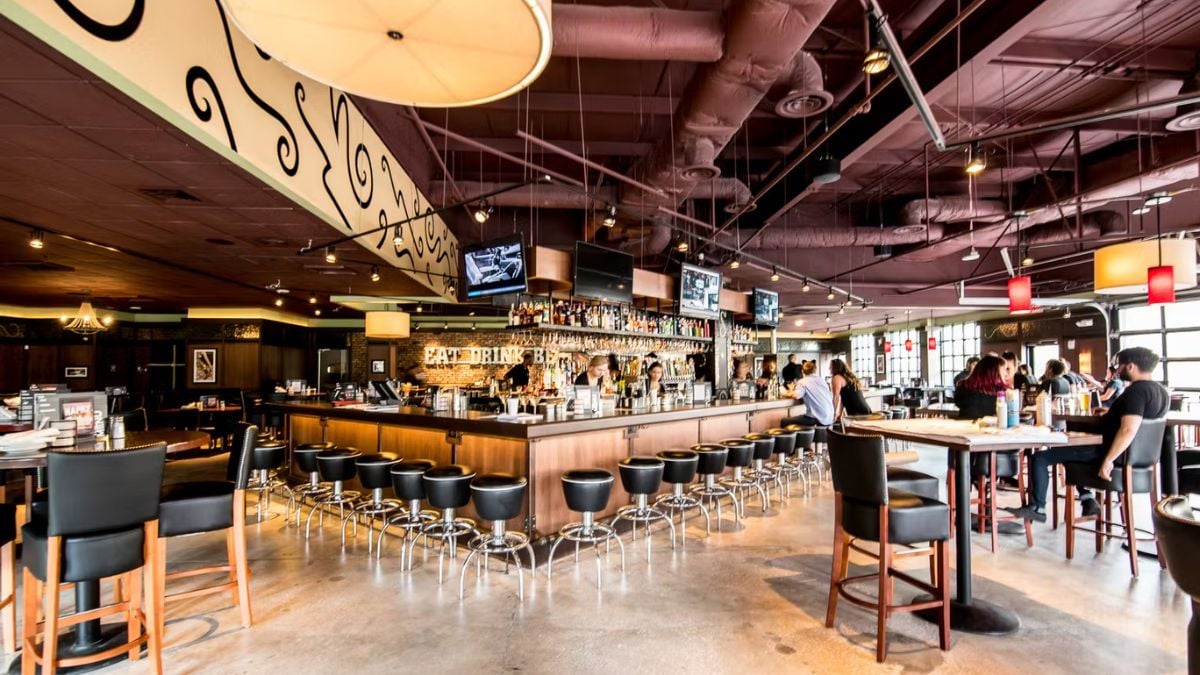
Bad news for Bar Louie customers! The restaurant chain has announced that it has filed for Chapter 11 bankruptcy protection in the United States and now plans to close dozens of its locations across the country. Here’s what we know about the situation.
Why is Bar Louie closing its locations?
The company filed for bankruptcy in the U.S. Bankruptcy Court for the District of Delaware, citing financial and operational challenges. Bar Louie reported assets between $1 million and $10 million, with liabilities estimated between $50 million and $100 million.
It stated that inflationary pressures have caused consumers, in general, to reduce their dining-out habits. At the same time, menu prices have increased to adjust to rising costs of food, utilities, and labor.
“As a result, many of the Debtors’ restaurants have performed below expectations, which has weighed on their financial performance and diverted management’s attention,” said Leslie Crook, the company’s managing director, in the bankruptcy statement.
ALSO READ Our Family ground coffee bags recalled; this is the reason
Which Bar Louie locations have closed?
At least 13 of the chain’s restaurants have already started to close, including some in Detroit, Nashville, and East Brunswick, New Jersey. According to the company, these locations are considered underperforming and were closed to improve the financial stability of the business. For those that remain open, the bankruptcy process is not expected to impact daily operations.
History of Bar Louie
The company was founded in 1991 in Chicago, Illinois, and is known for serving food, beer, and cocktails at locations mainly in urban and suburban areas. It is currently headquartered in Addison, Texas, and operates 31 company-owned locations and 17 franchised locations in 19 states across the U.S.
In 2020, Bar Louie filed for bankruptcy and was acquired by its current owners, BLH TopCo, as part of that process. Before the bankruptcy, in 2018, the chain had more than 130 establishments.
What is Chapter 11 of the U.S. Bankruptcy Code?
Chapter 11 of the Bankruptcy Code in the United States is one of the most common options used by businesses and individuals facing difficulties honoring their financial obligations but who wish to restructure and continue operating.
This chapter allows organizations to keep operating while temporarily suspending debt payments, making it easier to restructure. At the end of the process, creditors are expected to receive payments according to a pre-agreed plan. Unlike other alternatives that seek to partially or fully close a company, Chapter 11 is primarily seen as a preventive measure and does not necessarily mean that those filing are fully bankrupt.
The debtor uses the time from filing the petition to the confirmation of the reorganization plan to address financial obligations and redefine their economic situation.
Who can seek protection under Chapter 11?
U.S. legislation stipulates that any business or individual with residency, a place of business, or assets in the country can request court intervention to restructure their finances and operations under the provisions of Chapter 11.
What benefits does Chapter 11 offer?
This process functions as a form of penalty commutation, allowing the company or individuals who file for it to avoid immediate dissolution, liquidation, and cuts to their operations. During this period, the law grants the applicant the opportunity to continue operating and restructure without the pressure of creditors.
At the same time, they are allowed to negotiate and propose a payment plan to settle their debts. Additionally, one of the advantages of reorganization proceedings under Chapter 11 is that the company’s management retains control over the business.









